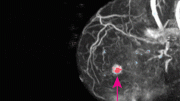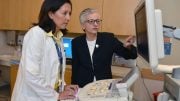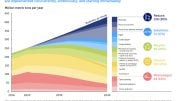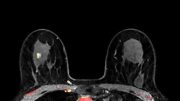Eye-tracking technology provides a tool for more objective assessment of factors affecting visual attention and attractiveness.
New study may help to improve the results of cosmetic and reconstructive breast surgery.
What makes the female breast attractive? The answer is subjective, of course. But studies using eye-tracking technology are providing a more objective basis for determining which breast areas are most attractive — which may help to improve the outcomes of surgery, reports the December issue of Plastic and Reconstructive Surgery, the official medical journal of the American Society of Plastic Surgeons (ASPS).
The lower breast — especially the nipple and surrounding area — gets the most attention from both men and women, according to the study by Piotr Pietruski, MD, PhD, Department of Plastic and Reconstructive Surgery, Prof. W. Orlowski Memorial Hospital, Warsaw. They write, “Thanks to objective analysis of observer’s gaze pattern, eye-tracking technology may provide a better insight into the visual perception of breast esthetics and symmetry.”
In the study, 50 male and 50 female observers were asked to assess the aesthetics and symmetry of eight types of female breasts. The images varied in terms of breast size and degree of ptosis (sagging). The researchers used eye-tracking technology to collect data on what parts of the breast image the observers were looking at, and how long they looked at each area.
Although there were some differences based on the sex of the observer and the type of breast, “the key characteristics of gaze patterns in women and men were essentially the same,” Dr. Pietruski and colleagues write. The main area of interest was the lower portion of the breast — especially the nipple and surrounding area (nipple-areola complex, or NAC).
In both men and women, about three-fourths of gaze time was on the NAC and lower breasts. The NAC was also “the most common point of initial fixation.” Surprisingly, the upper regions of the breast generally didn’t attract the observers’ attention — although men paid more attention to the upper breast than women did.
The question of what makes breasts attractive is obviously important for plastic surgeons and patients, for both cosmetic and reconstructive breast procedures. But for the breasts as for other areas of the body, surgeons and patients may have differing perceptions about attractiveness. Eye-tracking technology provides a tool for more objective assessment of factors affecting visual attention and attractiveness.
The findings — especially the data on “attention-capturing time” — may identify factors affecting breast attractiveness. “These data may be helpful for understanding and subsequent standardization of subjective breast assessment procedures, and perhaps might even facilitate surgeon-patient communication regarding priorities of the surgery,” Dr. Pietruski and coauthors write.
They add, “It needs to be stressed that we still do not know how the visual pattern parameters translate on a subjective assessment of breast attractiveness.”
The study adds to previous plastic surgery research using eye-tracking technology to identify factors affecting breast attractiveness. In a previous paper in Plastic and Reconstructive Surgery, researchers at Stanford University found that restoring the NAC played an important role in restoring normal viewing patterns of reconstructed breasts after mastectomy.
“We were able to understand what specifically patients were looking at, and also understand where we can improve our results,” commented Gordon Lee, MD, one of the study authors. “By understanding the gaze pattern of patients preoperatively and postoperatively, we can target our surgical procedures to achieve the optimal symmetry.”
“By looking at where a participant’s gaze is directed, we can see what their attention is being drawn to — whether it be a scar, a shadow, a fold or a crease,” said Rahim Nazerali, MD, co-author of the Stanford University study. “This technology allows us to enhance certain features or disguise parts of the procedure area to provide the patient with the best possible outcome.”
Reference: “Analysis of the Visual Perception of Female Breast Aesthetics and Symmetry: An Eye-Tracking Study” by Piotr Pietruski, Wiktor Paskal, Adriana Paskal, Janusz Jaworowski, Lukasz Paluch and Bartlomiej Noszczyk, December 2019, Plastic and Reconstructive Surgery.
DOI: 10.1097/PRS.0000000000006292
Plastic and Reconstructive Surgery is published by Wolters Kluwer.









Be the first to comment on "Plastic Surgeons Use Eye-Tracking Technology to Build a Better Breast"